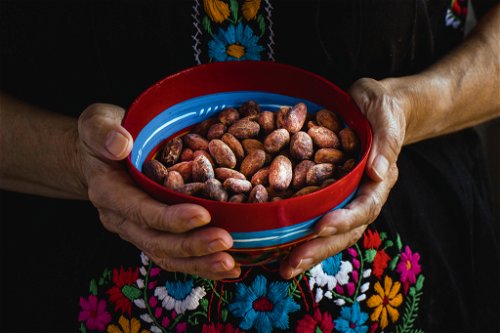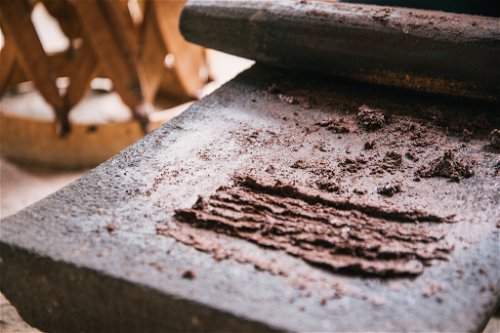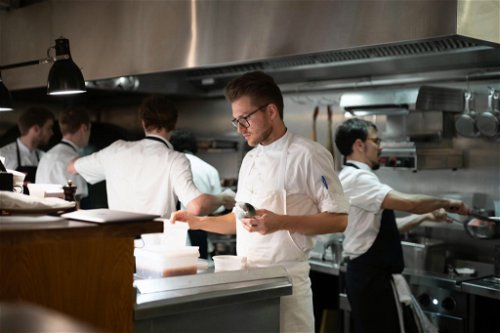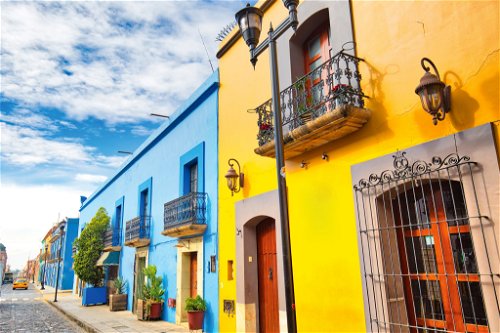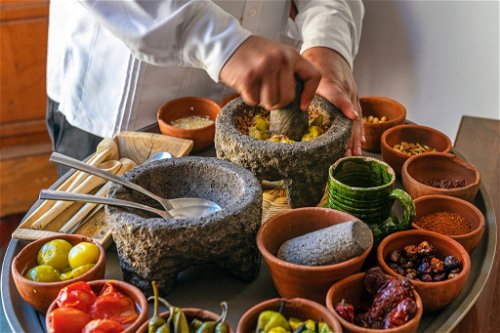UNESCO World Heritage Site: what makes Mexican cuisine so special
The focus is on the fusion of many ingredients. The best example: the pier.
Up to 75 ingredients are needed for a good mole to develop its full strength. It is a complex dish and draws its strength from the flavour interplay of chillies, nuts, beans and unsweetened chocolate. Sometimes it tastes spicy, sometimes sweet, then earthy. For many Mexicans, it is the undisputed national dish, a culinary sanctuary.
The thick sauce, which is used in many dishes, is not only brewed in the kitchens of the local population, but is also served in top restaurants. The fact that this is the case says a lot about how Mexicans see themselves in culinary terms. The cuisine of this Central American country reflects its turbulent history, shaped by the influences of ancient indigenous cultures and cruel conquerors from Europe. Influences that have combined over the centuries to create an aromatic mixture. The word "mole" comes from the indigenous language Nahuatl - and means "mixture" or brew.
The real Mexican cuisine, its essence, is still often unknown abroad. Our northern neighbour, the USA, is largely responsible for this. Mexican ingredients and flavours were adopted there early on, creating "Tex-Mex cuisine" - a neologism made up of "Texas" and "Mexico". The connecting element was initially the Spanish, who once acted as conquistadors south of the border and later also settled in Texas to the north. Then the fast food industry perverted "Tex-Mex" and exported it all over the world. Chilli Con Carne or nachos topped with melted cheese; traditionalists insist that none of this is really Mexican.
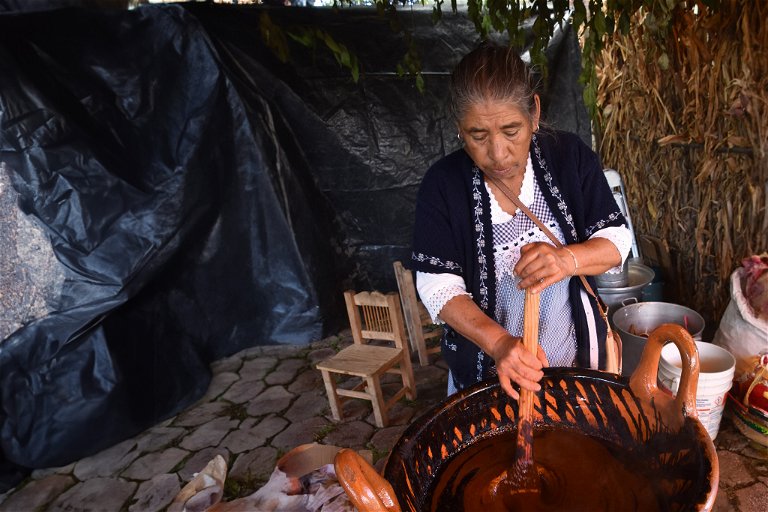
The American Dream
Today it is top Mexican chefs who are trying to uphold national culinary pride and (re)introduce people to the original recipes of their homeland. One of them is Carlos Gaytán. The fact that his life story reads like the American dream of all things may be a bit of a joke. But a good one.
Born into poor circumstances in the small town of Huitzuco, he left as a young man to get to know the big world in Chicago. He made a living illegally as a dishwasher. Gaytán's dream was to become a chef. In unpaid internships he learned the craft of classic French cuisine, became a chef de cuisine, opened his own restaurant and at some point cooked as a star in front of millions of viewers on US television.
In 2013 the Michelin Guide awarded Carlos Gaytán his first star. It was not only his first; never before has a Mexican been honoured with this award. But Gaytán fell into a crisis of meaning, left Chicago and returned to Mexico to remember the cuisine of his ancestors, which his grandfather had once taught him.
He assigned young Carlos to work in the fields after school, harvesting peanuts, melons and beans. They went hunting where they took the prey in the forest, prepared the meat and roasted it around the campfire. Just how large the game population still is today is one of the country's many secrets.
Back in Mexico, Gaytán tried his hand at honest regional cuisine, free of clichés. He travelled around, learned, and returned to Chicago to explain his Mexico to the Americans. "Several plates in the middle of the table, and everyone takes what they like. I wanted a real Mexican sharing concept," Gaytán explains in an interview. He realised it in "Tzuco", which he still runs today in Chicago.
Gaytán marinates pork knuckles with cinnamon, avocado leaves, almonds and garlic and roasts them for hours in banana leaves, or grills red-snapper with nori seaweed. The guests like it. Today this top chef is one of the most important culinary ambassadors of his home country.

Indigenous high culture
Of course it was not the Americans who caused the biggest break in the Mexicans' culinary self-image, but the Spanish much earlier. It is thanks to them that the cuisine of today's Mexico is so meat-heavy. The region's pre-Columbian cuisine was shaped by indigenous civilisations that cooked with completely different basic ingredients. Mexico is the origin of avocado, tomatoes, chili, corn, cocoa and vanilla. Corn in particular was considered the basis of all dishes, which is why the Aztecs worshipped their own corn god - the youthful Cinteotl. And the meat? Navel pig, rabbit, rodents, iguanas.
It was not until the Spanish conquest and colonisation in the 15th century that pork and beef were introduced. Rice and sugar too. Wheat was to replace maize, especially as the latter had a religious significance for the inhabitants. The Spaniards failed because maize grew better in the climate than wheat. While the people now ate beef the rich elite indulged in mutton, following the Spanish example. The influence of French cuisine increased in the 19th century. Beef was now the rich man's favourite food, and lard and butter were replaced by olive oil.
Honoured by UNESCO
Europeans could also have learned a lot from traditional Mexican cuisine; it is "a comprehensive cultural model that encompasses agriculture, ritual practices, ancient skills, culinary techniques and the customs and traditions of the ancestral community", as UNESCO recently stated. It defined Mexican cuisine as a world cultural heritage 13 years ago. Together with French cuisine, it was the first in the world to receive this honour.
The ancient Mayas were particularly creative and clever when it came to agriculture: they created so-called "milpas", fields in which three plants - maize, beans and pumpkin - are grown together to form a kind of symbiosis. The corn serves as a climbing aid for the beans, the beans provide the corn with nitrogen and the leaves of the pumpkin cover the soil, preventing it from drying out. The milpas were also recognized by UNESCO, as well as the "chinampas" (man-made cultivated areas in lake areas), nixtamalization (the liming of corn, which increases its nutritional value) and unique tools such as Mexican grinding stones and stone mortars.
The mortar leads directly back to the mole, the national dish. "An old woman once told me that the real secret ingredient was the mortar," recalls Luc Liebster. The Swiss chef is the sous-chef at "Pujol" in Mexico City. The restaurant is ranked 13th on "The World's 50 Best" list, and chef Enrique Olvera is considered one of the most creative minds in contemporary Mexican cuisine.
It goes without saying that the pier is also on the menu in his restaurant - and always is, even if the rest of the menu is rewritten. The classic "Mole madre, mole nuevo" consists of two types of sauce; a new, young one and the "Madre", the mother mole. Olvera himself started it in 2013 and it is now almost 3,000 days old and is cooked up with new ingredients before it runs out. "A complex taste experience," says Liebster. And what's the story with the mortar? A real stone mortar is never completely washed out. "There's always a secret ingredient left over from the last mortar and that gives it a kick."
Original Oaxaca
Mexicans agree that the best moles are enjoyed in the state of Oaxaca in the south of the country. Tamales (corn dough filled with meat or cheese and steamed in banana leaves) or chapulines (roasted grasshoppers) are also best tasted there. While international influences are most noticeable in Mexico City and culinary experiences in Yucatán often have a touristy touch, the love of authenticity seems to be greater in Oaxaca.
A cup of hot chocolate is indispensable. Locals drink it with breakfast or dinner. The indigenous people regarded it as an aphrodisiac and, according to legend, the Aztec emperor Montezuma drank it 50 times a day from a goblet made of gold.
So it's no wonder that it is also a central ingredient of the Mole.

